I am struggling to modify my code to define a specific range of the secondary x-axis. Below is a snippet of the relevant code for creating 2 x-axes, and the output it generates:
from matplotlib import pyplot as plt
import matplotlib.ticker as ticker
from mpl_toolkits.axes_grid.parasite_axes import SubplotHost
...
x = np.arange(1, len(metric1)+1) # the label locations
width = 0.3 # the width of the bars
fig1 = plt.figure()
ax1 = SubplotHost(fig1, 111)
fig1.add_subplot(ax1)
ax1.axis((0, 14, 0, 20))
ax1.bar(x, [t[2] for t in metric1], width, label='metric1')
ax1.bar(x + width, [t[2] for t in metric2], width, label='metric2')
ax1.bar(x + 2*width, [t[2] for t in metric3], width, label='metric3')
ax1.set_xticks(x+width)
ax1.set_xticklabels(['BN', 'B', 'DO', 'N', 'BN', 'B', 'DO', 'N', 'BN', 'B', 'DO', 'N', 'BN', 'B', 'DO', 'N'])
ax1.axis["bottom"].major_ticks.set_ticksize(0)
ax2 = ax1.twiny()
offset = 0, -25 # Position of the second axis
new_axisline = ax2.get_grid_helper().new_fixed_axis
ax2.axis["bottom"] = new_axisline(loc="bottom", axes=ax2, offset=offset)
ax2.axis["top"].set_visible(False)
ax2.axis["bottom"].minor_ticks.set_ticksize(0)
ax2.axis["bottom"].major_ticks.set_ticksize(15)
ax2.set_xticks([0.058, 0.3434, 0.63, 0.915])
ax2.xaxis.set_major_formatter(ticker.NullFormatter())
ax2.xaxis.set_minor_locator(ticker.FixedLocator([0.20125, 0.48825, 0.776]))
ax2.xaxis.set_minor_formatter(ticker.FixedFormatter(['foo', 'bar', 'foo2']))
...
This is the current output:
What I would like to have, is to not have the secondary x-axis (foo, bar, foo2) line extend beyond the first and last x-tick, as follows (I edited in MS paint ):
Any help appreciated.




